TL;DR
To reset network settings on Mac, follow one of these methods:
- Go to System Settings > Network and choose the network type. Tap Details next to your Wi-Fi network, click TCP/IP tab > Renew DHCP Lease > Apply > OK.
- Open Terminal, type
sudo ifconfig en0 downto turn off Wi-Fi, andsudo ifconfig en0 upto restart it. - Restart your Mac in Recovery Mode by holding Command ⌘ + R. Click Disk Utility > Continue. Choose your startup disk, click First Aid > Run, and restart your Mac.
Your Mac’s network settings can become corrupted over time, leading to Wi-Fi connection problems, slow internet speeds, or no internet connection. If you’re having trouble connecting to Wi-Fi or your internet connection is slow, your Mac’s network settings may be the culprit. In this guide, I’ll show you some quick ways to reset network settings on Mac to clear up these issues fast.
Before We Begin
Malicious and junk files can often lead to connectivity issues on Mac. MacKeeper can keep your Mac free of junk and malware. So, download MacKeeper and use its Safe Cleanup feature to protect your system against harmful files and prevent network issues.
Before You Reset Network Settings on Your Mac
If your Mac is running slow or having connection problems, you might think about resetting your network settings. But this is a big step that can erase important settings and might not even fix the problem. So, before you go that route, let’s try some simpler fixes first:
- 🔁 Restart Your Mac: Restarting your Mac can sometimes resolve network issues. Try restarting your computer and connecting to the network again.
- 🔌 Restart Your Router or Modem: If restarting your Mac didn’t work, try resetting your router or modem. Unplug the device, wait a few seconds, and then plug it back in. Wait for it to reboot fully, then try connecting to the network again.
- 📞 Contact Your Internet Service Provider: If you’re still experiencing network issues, contact your Internet service provider (ISP). Your ISP can identify and resolve connectivity issues on their end or provide further assistance.
- 🧹 Clear Junk Files on Your Mac: You should also clear your Mac to ensure temp files or caches are not the problem. Many methods exist, but I recommend using MacKeeper to clear your Mac.
Here’s how to use MacKeeper to clean junk files on your Mac:
- Download and Install MacKeeper.
- Launch MacKeeper and select Safe Cleanup from the left-hand menu.
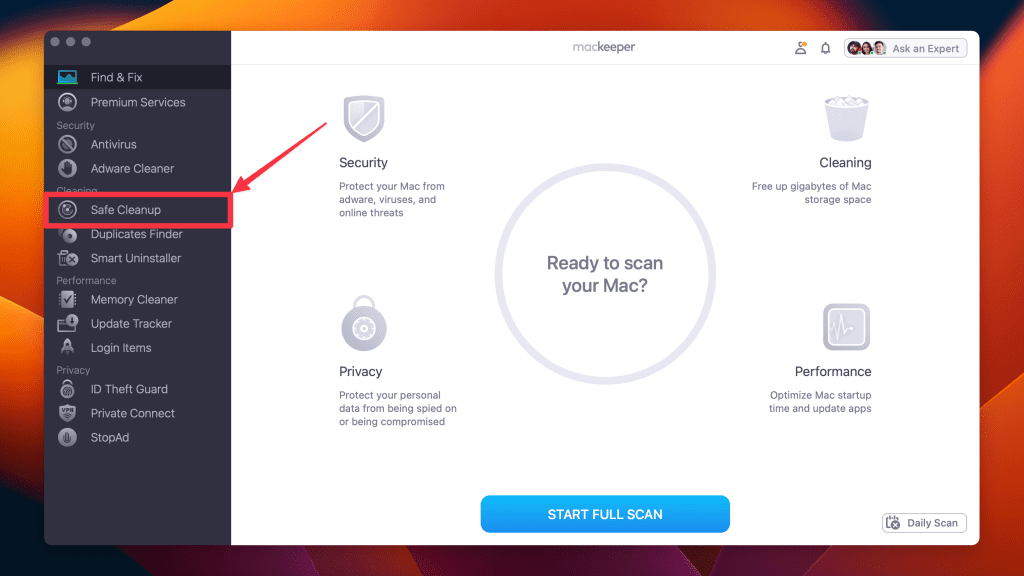
- Click Start Scan to scan your Mac for unnecessary files.
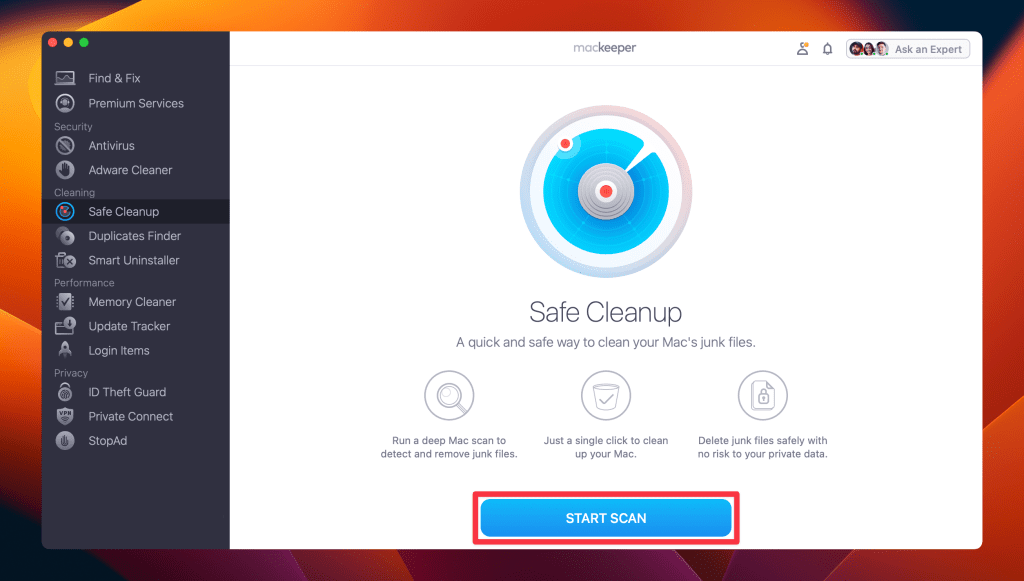
- Once the scan is complete, review the files that can be safely removed. Check the boxes next to the files you want to delete or use the Check All option to delete the unnecessary files.
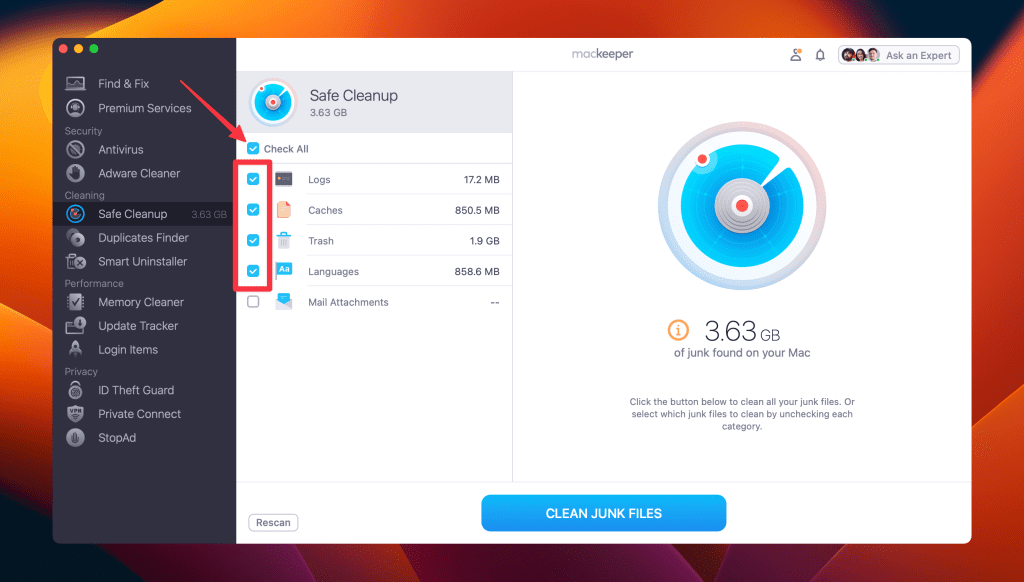
- Tap Clean Junk Files to delete the selected files.
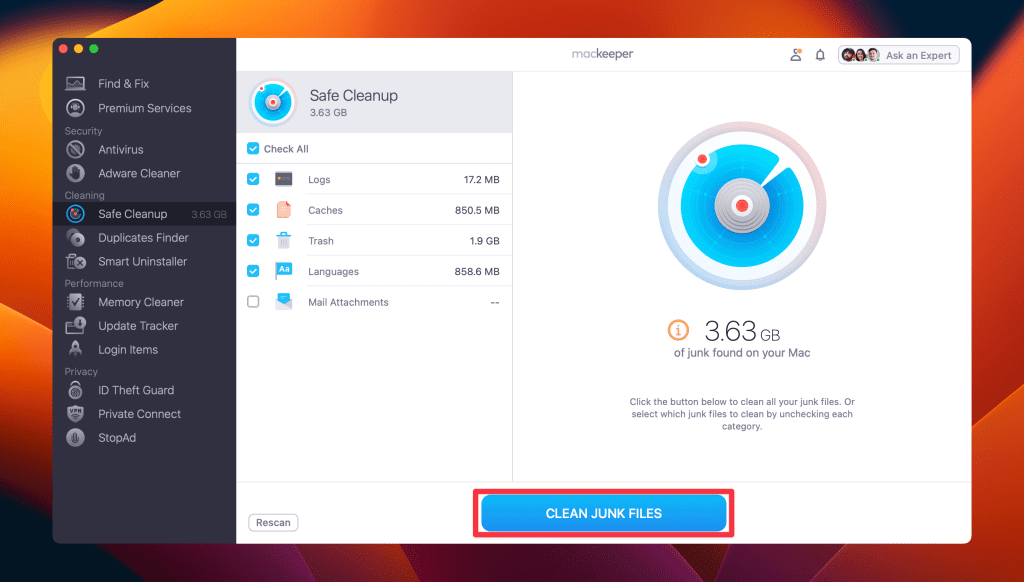
- This will delete all the unwanted junk files from your Mac, and you’ll get a Cleaning Completed message on your screen. Click Continue to end the program.
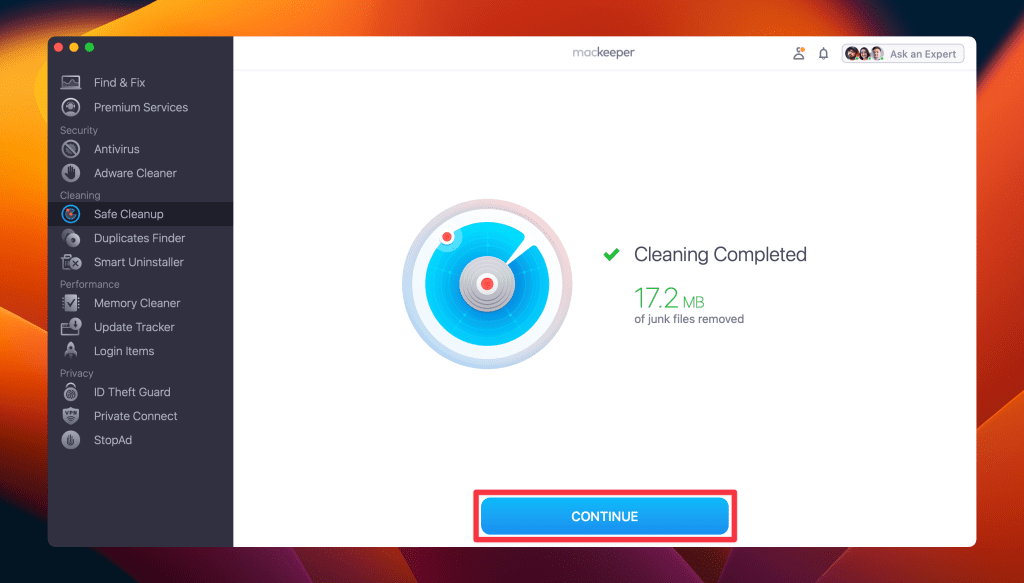
What Else Can MacKeeper Do?
Besides clearing junk files on your Mac, MacKeeper can help delete duplicate files, remove login items, and check your Mac for malware. You can learn more about its amazing features in my detailed MacKeeper review.
How to Reset Network Settings on Mac
Why You Can Trust MacBook Journal We always conduct first-hand research and verify every method or solution we present, ensuring you receive reliable and effective advice. Learn more about our process.
Below, I’ll show you my top five easy ways to reset network settings on Mac to fix issues with Wi-Fi and network settings configuration.
A Quick Warning: This process can change your current network configurations, and you might need to re-enter some network information afterward.
1. Delete and Re-add Your Wi-Fi Connection
Deleting and re-adding your Wi-Fi connection on a Mac can often resolve issues related to network connectivity. Here’s how to delete your Wi-Fi connection:
- Click the Apple menu and select System Settings.
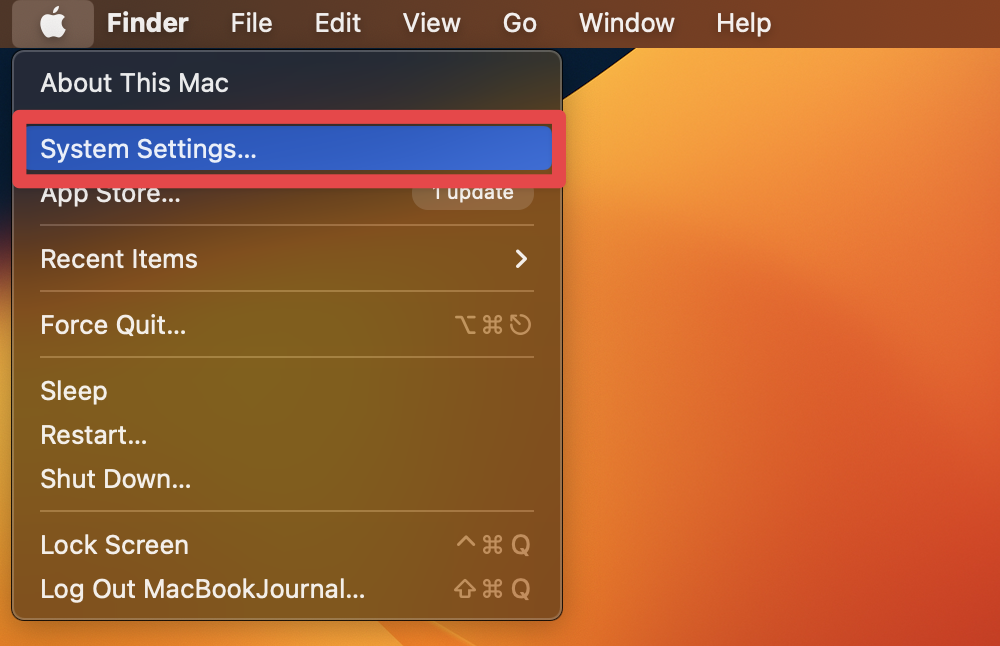
- Click Network in the left sidebar and select Wi-Fi.

- Click the Details button next to your Wi-Fi network.

- Click Forget This Network on the next window that appears.

- A prompt may appear asking if you’re sure you want to remove the Wi-Fi service. Confirm your choice by clicking Remove.

- To re-add the Wi-Fi network, click the Connect button next to your desired network.

- Once connected, try browsing the internet or performing an online task to ensure the connection works properly.
2. Use System Settings
System Settings is the easiest way to reset all network settings to default. This can fix any issues with your network connection, like slow internet speeds or difficulty connecting to Wi-Fi.
Here’s how you can reset network settings on your Mac using System Settings:
- Click the Apple menu and select System Settings.

- Click Network in the System settings window.
- Select the type of network connection you want to reset (Ethernet, Wi-Fi, etc.) from the list on the right side.

- Click the Details button next to your Wi-Fi network.

- Select the TCP/IP tab.

- Tap the Renew DHCP Lease button.

- Confirm by clicking the Apply button.

- Click the OK button to save your changes.

Your Mac will now reset the network settings for the selected network connection. After the reset, you may need to reconnect to your Wi-Fi network or Ethernet connection.
3. Try a Terminal Command
Using Terminal to reset network settings gives you more control over the process. It lets you see exactly what changes are being made to your device’s network settings. You can use Terminal to troubleshoot and diagnose issues with your network connection.
This method requires administrator privileges and should be used cautiously, as it can potentially harm your system if misused.
Here are the steps to reset network settings on Mac using Terminal:
- Open Terminal from the Utilities folder or by searching for Terminal in Spotlight.

- To turn off Wi-Fi, type the following command and press Enter:
sudo ifconfig en0 down 
- Alternatively, you can type the following command to restart Wi-Fi and press Enter:
sudo ifconfig en0 up
- Type your administrator password if prompted.

- Wait for the command to execute. This may take a few minutes and your Wi-Fi should be turned off (or on, depending on the command you used).

- Restart your Mac, and it should fix the Wi-Fi connection issues.
4. Reset Network Configuration Files
Resetting network configuration files on a Mac can also resolve issues related to network connectivity. This process involves deleting certain system files that store network settings, forcing your Mac to recreate them with default settings.
Here’s how to reset network configuration files on Mac:
- Click the Wi-Fi icon in the menu bar and toggle off Wi-Fi.
- Open a new Finder window. Click Go in the menu bar and select Go to Folder or use the shortcut: Shift ⇧ + Command ⌘ + G.
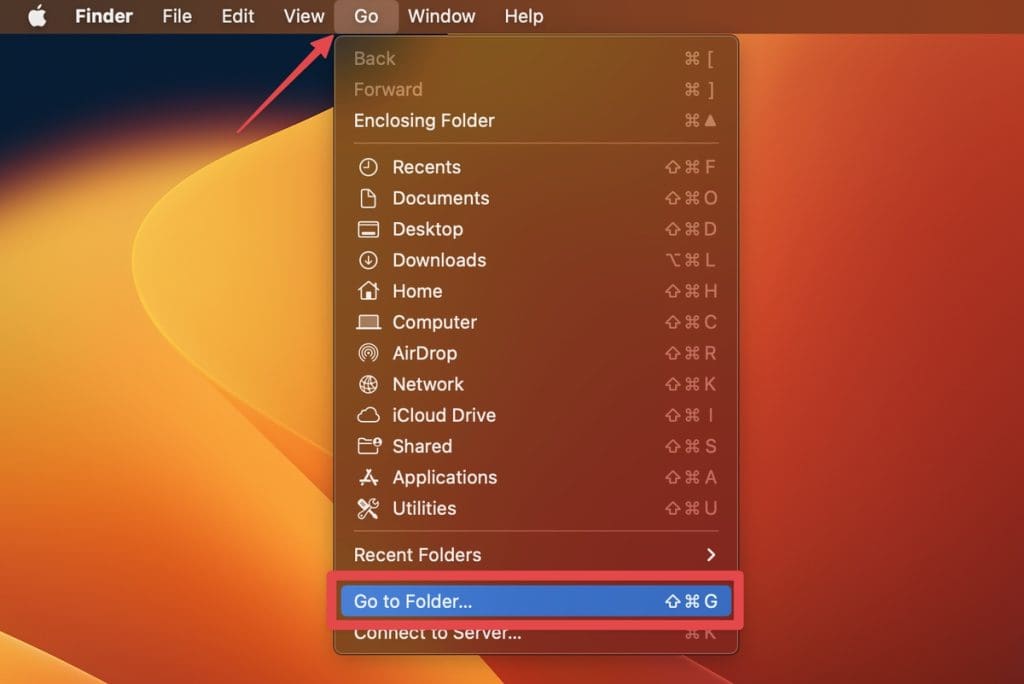
- Enter the following path and press Enter:
/Library/Preferences/SystemConfiguration/- Select the following files:
- com.apple.airport.preferences.plist
- com.apple.network.identification.plist
- com.apple.network.eapolclient.configuration.plist
- com.apple.wifi.message-tracer.plist
- NetworkInterfaces.plist
- preferences.plist
- Copy all these files to the desktop to create a backup.
- Right-click these files in their original location and select Move to Bin to delete them.
- Restart your Mac. After your Mac restarts, reconfigure your network settings. This includes reconnecting to your Wi-Fi network and entering the password.
5. Boot in Recovery Mode
If you’re still facing network problems, try starting your Mac in Recovery Mode. This mode has tools to fix your Mac’s system, including any network setting issues you might have caused.
Follow these steps to reset network settings on Mac using Recovery Mode:
- Hold down Command ⌘ + R until the Apple logo appears.

- Select Disk Utility and click Continue.

- Select your startup disk from the list on the left and click First Aid.

- Click Run on the pop-up and wait for the repair process to complete (this may take several minutes).

- Restart your Mac.
Why Reset Network Settings on Mac?
Resetting network settings on a Mac can fix various network-related issues, improve internet speeds, and ensure a stable and reliable network connection. Some reasons to reset network settings are as follows:
- 🔌 Resolve Connectivity Issues: Network settings can sometimes get corrupted or misconfigured, causing connection problems. Resetting network settings can resolve such issues.
- 📵 Remove Saved Networks: Resetting network settings clears all saved Wi-Fi networks, ensuring the Mac does not automatically connect to a problematic network.
- 🗑️ Clear Cache: Resetting network settings also clears the cache and temporary files related to network connections. It can improve performance and stability.
- 🌐 Solve DNS Issues: DNS (Domain Name System) translates website names to IP addresses. If the DNS settings on your Mac are incorrect, you may not be able to access certain websites. Resetting network settings can fix DNS issues.
- 🔒 Fix VPN Problems: If you use a VPN (Virtual Private Network) to connect to the internet, resetting network settings can fix any issues with the VPN.
- 🔥 Resolve Firewall Issues: If the firewall settings are misconfigured, you can reset network settings on Mac to fix firewall-related problems.
What If Resetting Network Settings Doesn’t Fix Your Network Issues?
If resetting network settings doesn’t resolve your network issues, there may be a deeper problem with your Mac or network. Here are some other steps you can take:
- 🔌 Check Hardware Connections: Ensure all cables and hardware components are properly connected and functioning.
- 🔄 Update Your Software: Sometimes, an outdated macOS can cause network problems. Check for any available system updates and update your macOS.
- 🔛 Restart Your Router: This can resolve many network issues. Turn off your router, wait a few moments, and turn it back on.
- 📡 Check for Interference: Other devices or networks can interfere with your Wi-Fi signal. Try moving closer to your router or reducing interference.
- 📞 Contact Your ISP: If the problem persists, your internet service provider may be able to help identify and resolve the issue.
- 🛠️ Seek Professional Help: If you’ve tried everything and still have issues, it might be time to consult with a professional or visit an Apple Store for further assistance.
Reset Your Mac Network Settings
If your Mac has slow internet or connection problems, resetting network settings can help. But this doesn’t fix everything. Here are some tips to solve other common Mac issues:
- Use Apple Diagnostics on your Mac to identify hardware problems and diagnose issues.
- Repair your Mac startup disk to enhance its speed and efficiency.
- Reinstalling macOS on your MacBook may be your only solution if nothing else resolves performance issues.
Frequently Asked Questions
-
What is the difference between resetting network settings and all Mac settings?
Resetting network settings on a Mac specifically targets and restores internet and connectivity configurations to default, without affecting other system settings. In contrast, resetting all Mac settings reverts the entire system, including display, sound, and user preferences, to their original factory state.
-
What does resetting network settings do on a Mac?
Resetting network settings on a Mac restores all network configurations to their original state. This process can solve issues related to Wi-Fi, ethernet connections, and other network-related problems by erasing customized settings and returning them to default factory settings.
-
Can resetting network settings on Mac fix issues with slow internet speeds?
Resetting network settings on Mac can fix issues with slow internet speeds, depending on the cause of the issue. It can help resolve problems related to network configuration issues, such as incorrect DNS settings or outdated network preferences, which can cause slow internet speeds.








